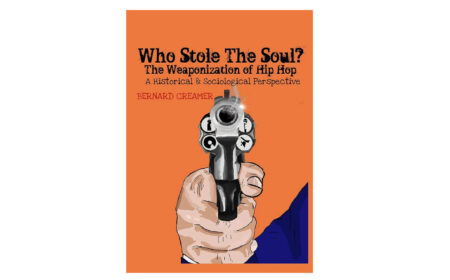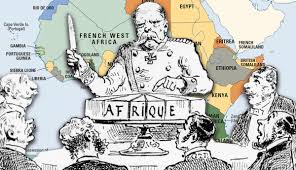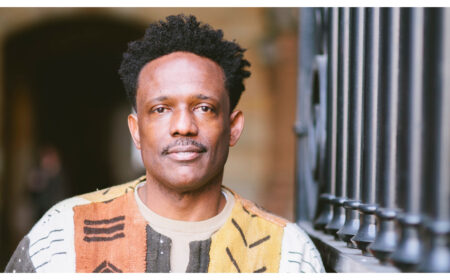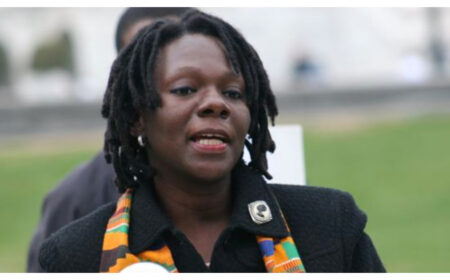Just as Black Men were targeted and injected with drugs for the Tuskegee Experiment, and Black Women in the U.S. and other countries injected, some forcibly with contraceptive drug Depo-Provera. We must start understanding what and whom we are dealing with. Please read the article and leave comments.
Minority Report: A Covert CDC Program Inoculated Black Babies with Deadly, Experimental Measles Vaccines
By Neil Z. MillerA Senior Scientist with the CDC, Dr. William Thompson, recently admitted that he and his co-authors intentionally omitted statistically significant information from their 2004 study that was published in the journal Pediatrics. The excluded data showed that “African American males who received the MMR vaccine before age 36 months were at increased risk for autism.”(1,2) Dr. Brian Hooker, an independent scientist, re-analyzed the original CDC data and published his results confirming that “African American boys receiving their first MMR vaccine before 36 months of age are 3.4 times more likely to develop autism” when compared to African-American boys who receive MMR after 36 months of age.(3)
For more than 10 years, the CDC buried scientific evidence that young Black boys who receive the MMR vaccine have a significantly increased risk of developing autism. The CDC kept this crucial information confidential. The CDC refused to warn the public. The parents of Black babies were not provided with informed consent and their human rights were violated.
Concerned parents are now wondering whether this callous and potentially criminal behavior by the CDC is a one-time fluke or part of a larger pattern. Actually, the CDC and World Health Organization (WHO) have a history of violating the human rights of Black families by unethically experimenting on their babies with dangerous measles vaccines.
A CDC and WHO Catastrophe
In developing countries where children are malnourished and health care is inadequate, measles fatality rates between 5 and 10 percent are possible.(4-6) However, infants up to five months old are usually protected by maternal antibodies that they received during birth.(7-9) Standard measles vaccines do not work in babies under nine months of age.(10) Thus, authorities reasoned that if an effective vaccine could be developed for this vulnerable period — from 5 to 9 months of age — the measles death rate could be lowered.
Scientists pinned their hopes for a new measles vaccine on “high-titer” shots that are up to 500 times more potent than standard measles vaccines.(11) In the early 1980s, they tested one of these — the Edmonston-Zagreb (EZ-HT) strain — on Mexican and Gambian babies 4 to 6 months old.(12-15) During the next few years this high-titer measles vaccine was also tested on babies in Guinea-Bissau, Togo, Senegal, Haiti, and impoverished minority communities in Los Angeles, California.(16-22) The general public was informed that EZ-HT “produces a better immunological response than standard vaccines,” but a large, randomized controlled study published in The Lancet confirms that it was experimental and deadly.(17)
The Senegal study
From 1987 to 1989, scientists set up a research center near 30 remote villages in central Senegal. Their stated primary objective was to study the clinical efficacy of two high-titer measles vaccines: Edmonston-Zagreb (EZ-HT) and Schwartz (SW-HT).(17) However, researchers had already done several studies demonstrating that high-titer measles vaccines produce a better immunological response than standard vaccines when given to children younger than nine months and as early as four months.(13-16; 18-21) Therefore, scientists conducting the Senegal study might have had another agenda. In fact, an elaborate “mortality surveillance” was established to check safety, evaluate the vaccination strategy, and perform “independent checks on child deaths.”(17)
Researchers might have suspected the vaccine was dangerous when the results of earlier studies began to filter in. But they were probably reluctant to abandon their high-titer shot without testing it at least one more time to be sure. Senegal must have seemed ideal; the region was extremely remote, and less than 4% of the mothers who “consented” to the study were literate.(17)
To begin the study, researchers randomly assigned comparable children to three vaccine groups: a) EZ-HT administered at five months; b) SW-HT given at five months; and c) placebo at five months, followed by a standard low-titer measles vaccine at 10 months. All of the children were followed for up to three years. When the results were tabulated (using eight statistical procedures) it became clear that children who received the high-titer measles vaccines had significantly higher mortality at 41 months than children in the standard low-titer measles vaccine group. But they were not dying from measles. Most of the deaths were from other common childhood diseases. Apparently, the high-titer measles vaccines lowered overall immunity making the children fatally susceptible to diarrhea, dysentery, malaria, malnutrition, acute respiratory ailments, and other infectious diseases.(17)
Children who received the Schwartz strain (SW-HT) died of other diseases at a rate 51% higher than children who received a standard vaccine. There were 48 excess deaths for every 1000 babies vaccinated. Children who received the Edmonston-Zagreb strain (EZ-HT) died of other diseases at a rate 80% higher than children who received a standard vaccine. There were 75 excess deaths for every 1000 babies vaccinated.(17) Mortality remained consistently high in the second and third year after the EZ-HT vaccine was administered, whereas it declined substantially in the control group. One of every six babies vaccinated with EZ-HT died within three years.(17)
When it started to become clear that mortality in the high-titer vaccine groups was excessive, researchers refused to end the study. Instead, they sought out new babies to take part in more tests of their deadly shots.(17) They said, “these findings suggest a need to reconsider the use of high-titer measles vaccines early in life in less developed countries.”(17) [Author’s emphasis added.] The implication is that EZ-HT and EZ-SW may be okay for use in more developed countries. In fact, the Senegal researchers were willing to develop “other strategies to reduce mortality from early measles,” but apparently only “if these findings are confirmed in other settings.”(17)
The Los Angeles study
Vaccine researchers were unwilling to abandon their deadly Edmonston-Zagreb high-titer measles vaccine. Instead, they set up a study base in Los Angeles, California. In 1990, three years after the Senegal study was initiated, the first American Black and Hispanic babies were inoculated with EZ-HT.(22)
The World Health Organization (WHO) and the CDC knew about the high mortality associated with EZ-HT but considered the data “preliminary.”(23) Thus, the Los Angeles trials were permitted to occur. However, Dr. Joanne Hatim, an active proponent of vaccine safety, questioned the experimental study and was able to muster public outrage.(22) In 1991, the Los Angeles trials were halted, but not before nearly 1500 minority babies were experimented on.(24)
The CDC was dishonest about the Los Angeles study on several points, both before and after it was conducted:
1) The “informed consent” form provided to parents violated U.S. and internationally accepted ethical codes of conduct regulating human experimentation. The mothers and fathers of the babies who were used as research subjects were not informed that EZ-HT was unlicensed in the U.S. It was registered as an investigational new drug to be used for experimental and research purposes only.(22) Nor were they informed of earlier studies in Guinea-Bissau, Senegal and Haiti where the EZ-HT measles vaccine had shown a significant increase in mortality.(22) The Los Angeles babies were used as sacrificial guinea pigs because it was well established before they were injected that this experimental vaccine was a killer.(22)
2) Parents were told that millions of doses of the Edmonston-Zagreb vaccine had already been used in Europe. But the Los Angeles, California babies were not receiving that vaccine; they were being injected with the significantly more potent, high-titer shot.(22)
3) The CDC claimed that the communities targeted for the experimental vaccine were hardest hit by a recent outbreak of measles. Babies in Inglewood, East Los Angeles, and West Los Angeles received the shots.(24) However, according to data obtained from the Los Angeles County Department of Health, 14 of 24 regions within Los Angeles County had a greater number of confirmed measles cases than East Los Angeles, and 16 of 24 regions had more measles than West Los Angeles. Inglewood was ranked fourth. In other words, communities targeted for the experimental shots were not hardest hit by the recent outbreak of measles.(22)
The three regions chosen to receive the experimental shots were predominantly Black and Hispanic. In fact, 88% of the babies were minorities. Several mixed-race and White communities harder hit by the recent outbreak of measles were not chosen to participate in the study.(22
4) The CDC claimed that no children were adversely affected by the experimental vaccines. However, one baby died from a rare bacterial disease.(24) Furthermore, according to investigative journalist Keidi Obi Awadu, several children “experienced what parents are describing as long-term immune system impairment, seizures and other acute conditions consistent with vaccine-induced injury.”(22)
5) Dr. Stephen Hadler, director of the epidemiology and surveillance division of the CDC’s national immunization program, claimed that babies died in the earlier studies because they were malnourished and did not have access to adequate health care.(24) However, the Senegal study emphasized that “the three vaccine groups were comparable as regards various social, family, and health characteristics.”(17) If the babies vaccinated with high-titer shots were malnourished, so were the babies in the control group, yet mortality was 80% higher in the group receiving EZ-HT.(17) Regarding the claim that babies did not have adequate health care, the Senegal study also noted that “intensive medical care [was] provided during the project.”(17) For example, “Free drugs and medical services were provided to all children. As a consequence, overall mortality was substantially lower than during the three preceding years.”(17)
6) The Los Angeles study might have had a hidden agenda. In Senegal, researchers established that “there was no significant difference within the study group in mortality by sex,”(17) yet scientists claimed the vaccine had a “mysterious gender bias,” with girls more likely to suffer from the vaccine-induced delayed mortality.(23) E. Richard Stiehm, an immunologist at the University of California, Los Angeles, speculated that girls mount a superior immune response to the measles vaccine, then suffer from a hypersensitivity that leaves them immunologically disadvantaged later on. Kenneth Bart, director of the National Vaccine Program Office in Rockville, Maryland, provided a sociological explanation: boys and girls probably get sick equally in the years after vaccination, but girls receive less adequate health care causing them to die at greater rates. However, Lauri Markowitz, an epidemiologist with the CDC, thought there might be a biological explanation, and claimed there is no evidence that boys in the earlier studies were treated better than girls. To shed light on this gender enigma, Markowitz planned to measure antibody levels and immune cell counts in Los Angeles children who received the high-titer vaccine.(23) Is it possible that these babies’ lives were placed in jeopardy to satisfy scientific curiosity and settle an academic debate?
In 1990, WHO requested 250 million doses of the deadly EZ-HT measles vaccine to be dispensed throughout the world.(22) However, data from Guinea-Bissau, Senegal, and Haiti continued to confirm that EZ-HT doesn’t save lives — it increases mortality.(23) By June of 1992, the link was irrefutable; WHO called for a moratorium on use of the disputed vaccine.(23) By some estimates, this might have prevented 18 million baby deaths.(22) Four years later, the CDC issued a tepid letter of regret by declaring, “a mistake was made.”(24) Yet, the entire debacle was unnecessary. In the Senegal study conclusion, the authors refer to a Togo study that used a low-titer measles vaccine and produced a good immunogenic response at six months.(20)
Researchers also discussed another Senegal study where standard measles vaccines “were safe, even when given at 4-6 months.”(17) Furthermore, “since most complications of measles occur during the 2nd and 3rd weeks after onset, early treatment is possible.”(17) In fact, “a systematic treatment of complications in [the other Senegal study] reduced the case-fatality rate among children below three years of age by 78%.”(17) Thus, non-fatal options were available.
Summary
A top scientist at the CDC recently admitted that he and his co-authors omitted crucial information from a study that was published 10 years ago. The excluded information showed that “African American males who received the MMR vaccine before age 36 months were at increased risk for autism.”(1,2) Less than 20 years before their study was published, the CDC tested deadly, experimental measles vaccines on African infants and then again on inner-city American babies. These examples provide strong evidence that the CDC is engaged in a pattern of cavalier, unethical and potentially criminal behavior whereby the human rights of Black families and minority children are being violated. You should trust the CDC and their measles vaccines, including MMR, at your own peril.
Notes
1. DeStefano F, Bhasin TK, Thompson WW, et al. “Age at first measles-mumps-rubella vaccination in children with autism and school-matched control subjects: a population-based study in metropolitan Atlanta.” Pediatrics 2004 Feb; 113(2): 259-66.
2. Press Release. “Statement of William W. Thompson, Ph.D., regarding the 2004 article examining the possibility of a relationship between MMR vaccine and autism.” August 27, 2014. www.morganverkamp.com
3. Hooker BS. “Measles-mumps-rubella vaccination timing and autism among young African American boys: a reanalysis of CDC data.” Translational Neurodegeneration 2014 Aug 8; 3: 16.
4. Henderson RH, et al. “Immunizing the children of the world: progress and prospects.” Bull WHO 1988; 66: 535-43.
5. Hayden GF, et al. “Progress in worldwide control and elimination of disease through immunization.” J of Pediatrics 1989; 114: 520-27.
6. Gold E. “Current progress in measles eradication in the U.S.” Infect Med 1997; 14(4): 297-300; 310.
7. Van Ginneken JK, et al. Maternal and Child Health in Rural Kenya. (London: Croom Helm, 1984).
8. Black FL, et al. “Geographic variation in infant loss of maternal measles antibody and in prevalence of rubella antibody.” American J. of Epidemiology 1986; 124: 442-52.
9. Garenne M, et al. “Pattern of exposure and measles mortality in Senegal.” J of Infectious Diseases 1990; 161: 1088-94.
10. WHO-EPI. “The optimal age for measles immunization.” Weekly Epidemiology Records 1982; 57: 89-91.
11. Job JS, et al. “Successful immunization of infants at 6 months of age with high dose Edmonston-Zagreb measles vaccine.” Pediatric Infect Dis J 1991 April; 10(4): 303-311.
12. Sabin AB, et al. “Successful immunization of children with and without maternal antibody by aerosolized measles vaccine. I. Different results with undiluted human diploid cell and chick embryo fibroblast vaccines.” JAMA 1983; 249: 2651-62.
13. Sabin AB, et al. “Successful immunization of children with and without maternal antibody by aerosolized measles vaccine. II. Vaccine comparisons and evidence for multiple antibody response.” JAMA 1984; 251: 2363-71.
14. Whittle HC, et al. “Immunisation of 4-6 month old Gambian infants with Edmonston-Zagreb measles vaccine.” Lancet 1984; ii: 834-37.
15. Whittle HC, et al. “Trial of high-dose Edmonston-Zagreb measles vaccine in The Gambia: antibody response and side-effects.” Lancet 1988; ii: 811-814.
16. Aaby P, et al. “Trial of high-dose Edmonston-Zagreb measles vaccine in Guinea-Bissau: protective efficacy.” Lancet 1988; i: 809-811.
17. Garenne M, et al. “Child mortality after high-titre measles vaccines: prospective study in Senegal.” Lancet 1991; 338: 903-7.
18. Whittle HC. “Effect of dose and strain of vaccine on success of measles vaccination of infants aged 4-5 months.” Lancet 1988; i: 963-66.
19. Khanum S, et al. “Comparison of Edmonston-Zagreb and Schwartz strains of measles vaccine given by aerosol or subcutaneous injection.” Lancet 1987; i: 150-53.
20. Tidjani O, et al. “Serological effects of Edmonston-Zagreb, Schwartz, and AIK-C measles vaccine strains given at ages 4-5 or 8-10 months.” Lancet 1989; ii: 1357-60.
21. Markowitz LE, et al. “Immunization of six-month-old infants with different doses of Edmonston-Zagreb and Schwartz measles vaccines.” NEJM 1990; 332: 580-87.
22. Awadu KO. Outrage! How Babies Were Used as Guinea Pigs in an L.A. County Vaccine Experiment. (Long Beach, CA: Conscious Rastra Press, 1996).
23. Weiss R. “Measles battle loses potent weapon.” Sci 1992 Oct. 23: 546-47.
24. Cimons M. “CDC says it erred in measles study.” L.A. Times (June 17, 1996).
Neil Z. Miller is a medical research journalist and the author of several articles and books on vaccines, including Vaccine Safety Manual for Concerned Parents and Health Practitioners.
http://www.blackisbackcoalition.org/2013/09/14/depo-provera-deadly-violence-against-women/







